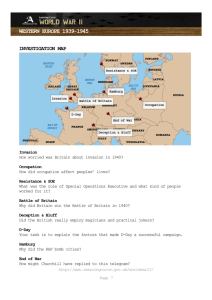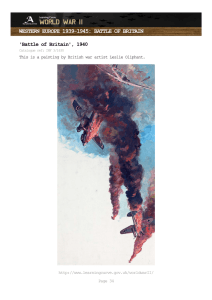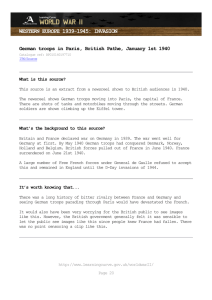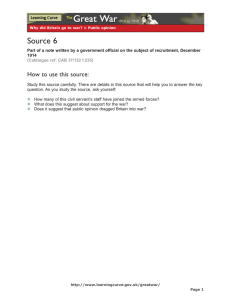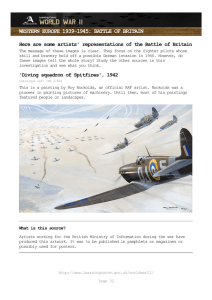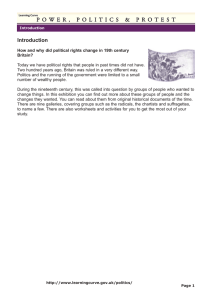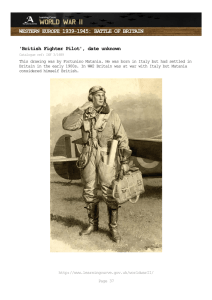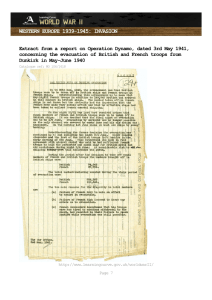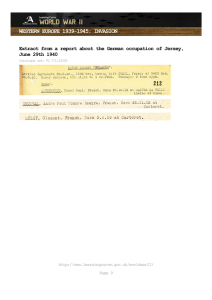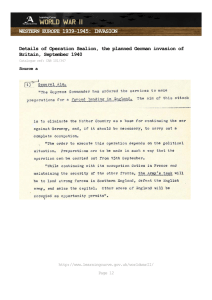WESTERN EUROPE 1939-1945: INVASION Casualties suffered by the British Expeditionary Force
advertisement
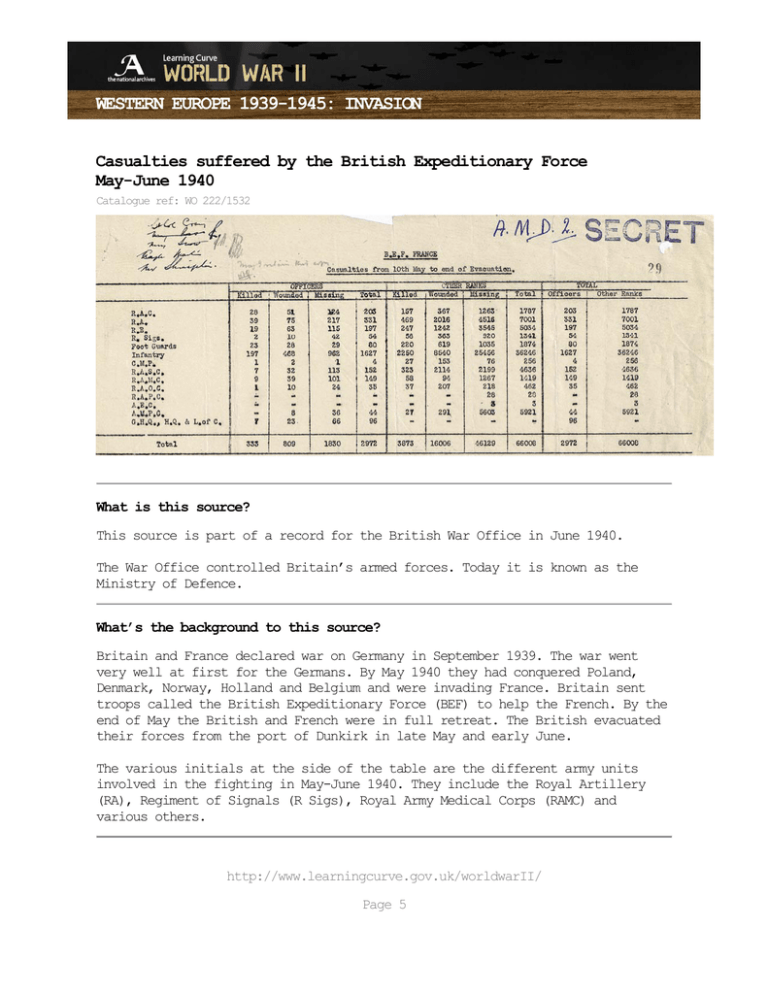
WESTERN EUROPE 1939-1945: INVASION Casualties suffered by the British Expeditionary Force May-June 1940 Catalogue ref: WO 222/1532 What is this source? This source is part of a record for the British War Office in June 1940. The War Office controlled Britain’s armed forces. Today it is known as the Ministry of Defence. What’s the background to this source? Britain and France declared war on Germany in September 1939. The war went very well at first for the Germans. By May 1940 they had conquered Poland, Denmark, Norway, Holland and Belgium and were invading France. Britain sent troops called the British Expeditionary Force (BEF) to help the French. By the end of May the British and French were in full retreat. The British evacuated their forces from the port of Dunkirk in late May and early June. The various initials at the side of the table are the different army units involved in the fighting in May-June 1940. They include the Royal Artillery (RA), Regiment of Signals (R Sigs), Royal Army Medical Corps (RAMC) and various others. http://www.learningcurve.gov.uk/worldwarII/ Page 5 WESTERN EUROPE 1939-1945: INVASION It’s worth knowing that... The fighting in France in 1940 was very fierce indeed. When the BEF had to leave France they had to leave most of their equipment behind. Casualty rates for BEF soldiers in this campaign were about 16.6%. In the First World War they were about 17%. This gives some idea of how serious the fighting was. What level of alert should Britain be on? 1. 2. 3. 4. Which units suffered the heaviest casualties? Is it clear why? What do these casualties tell you about the intensity of the fighting? Does this suggest the Germans were a serious threat? What level of alert would you put Britain on as a result of studying this source? Record your answer in your table - you can always change your mind as you study other sources. http://www.learningcurve.gov.uk/worldwarII/ Page 6
